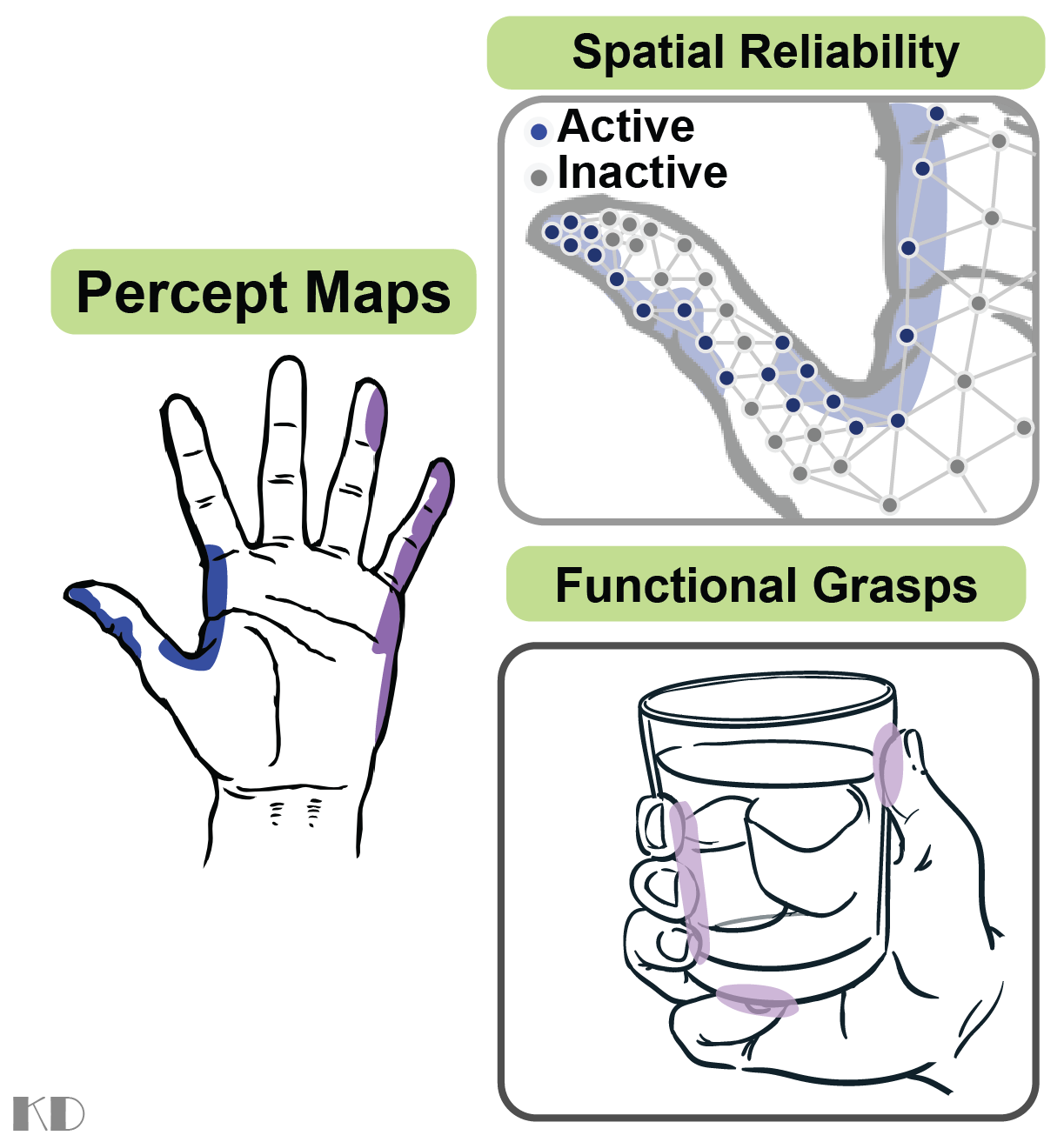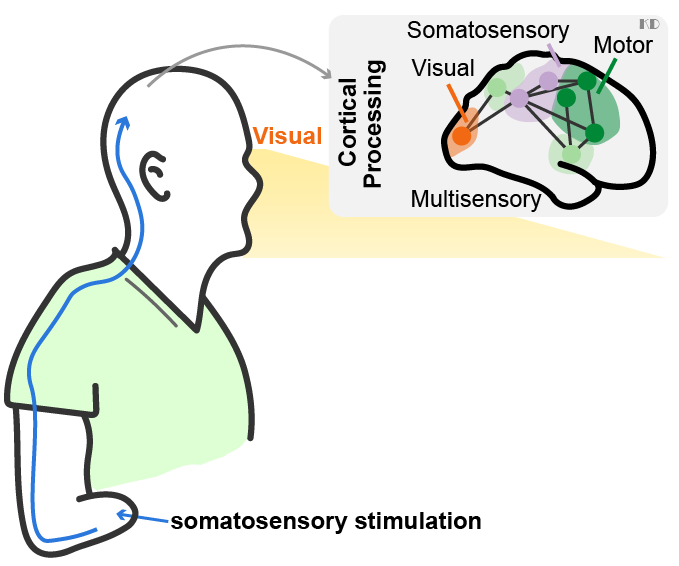Projects
Summary
I investigate how humans process and adapt to artificial sensory inputs, with particular emphasis on developing computational frameworks and objective neural (cortical) biomarkers for next-generation human-machine interfaces. My work bridges neuroscience, data science, signal processing, and neural engineering to understand sensory integration and neural adaptation.
My research combines rigorous experimental design with computational modeling of neural data, building generalizable approaches that translate neuroscience insights into practical applications. I have published a comprehensive review of sensory integration in neural prostheses (link), connecting fundamental neuroscience questions with practical neurotechnology applications.
My projects contribute to advancing neural prostheses, brain-computer interfaces, objective biomarker development, and human-computer interaction through both methodological innovation and fundamental scientific discovery.
Computational techniques for sensory stimulation percept maps

Electrical stimulation to the nerve, spinal cord, or cortical tissue creates tactile percepts in the missing or paralyzed limbs of individuals with amputations or spinal cord injuries. As technology development aims for long-term independent use, can we quantitatively evaluate these percept maps collected over multiple sessions?
In this work, I am developing a computational framework to quantify spatial reliability of percept maps. To demonstrate functional use cases, we are creating a tool that optimizes electrode selection based on user-defined prosthesis grips and percept regions. The techniques created in this work will be generalizable to different sensory stimulation paradigms.
Understanding cortical responses in artificial sensory systems

How does the brain respond and adapt to artificial sensory feedback? What neural mechanisms support successful integration of multiple sensory modalities? In this study, we recorded scalp level brain activity (i.e., EEG) when individuals with upper limb amputations received visual-tactile inputs and performed motor movements.
By modeling brain activity as dynamic functional networks, I characterized how large-scale cortical systems adapt to artificial tactile feedback combined with visual and motor cues. This work shows how the brain adapts to artificial sensory inputs. Our findings could inform adaptive neural interfaces, human-machine interfaces, and sensory augmentation in human-computer interaction.
Scientific Reports 2022 · ‘‘Behind the Paper’’ Post · JNE 2020a · JNE 2020b
Neural biomarkers in chronic pain for personalized pain care
Current clinical assessments of pain rely on subjective patient reports, making it difficult to deliver mechanistic-based personalized treatment. In chronic pain, central sensitization describes the increased responsiveness in the central nervous system to sensory inputs. Understanding neural features of central sensitization could unlock new approaches for monitoring pathological pain states.
In collaboration with clinicians, we investigated whether EEG signatures could objectively quantify central sensitization. By delivering controlled stimulation to chronic pain patients and healthy individuals, we identified cortical indicators that distinguish between these individuals.
JNE 2024
Additional Research
Neural correlates of VR immersion
Does increased immersion enhance motor imagery training? We compared cortical responses during motor imagery under three cue presentaions of a prosthesis hand: static images, vidoes, and VR. This research can inform effective design of VR-based rehabilitation and BCI training protocols.
NER 2023
Network analysis of visual cortex dynamics
I applied network analysis methods to characterize dynamic connectivity patterns in calcium imaging data from mouse visual cortex in collaboration with neuroscientists. This work demonstrates how network-based approaches can reveal large-scale neuronal dynamics across different cell types, with applications for understanding cortical circuit organization.